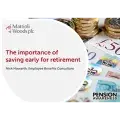With uncertainty continuing to surround foreign holidays over the next year, more and more people are planning UK-based holidays or stay-cations as a way of getting a break from work, and hoping they picked the one week a year this country gets some decent weather!
Staying local for our holidays may in turn lead to significant savings on how much we are spending, and with an increased focus on work as ‘work from home’ continues to be the norm for many people, we may lose sight of refreshing savings allowances now that the new tax year has started.
But what are these allowances, and where can we save our money?
Individual Savings Account (ISAs) are a useful wrapper within which to save surplus cash. ISAs come in many forms; cash, stocks-and-shares, lifetime and innovative finance and allow people to save money in a tax-free environment. The standard ISA annual allowance is £20,000 per tax year across all ISAs held, although a Lifetime ISA has it’s own annual limit of £4,000.
Alongside ISAs are Junior ISAs, which again can be cash or stocks-and-shares based and can be set up for under 18s. The annual limit on these is currently £9,000.
Venture Capital Trusts (VCTs), Enterprise Investment Schemes (EISs) and Seed Enterprise Investment Schemes (SEISs) are alternative types of investments that give rise to a variety of tax advantages. The headline saving is income tax relief (30% of the amount invested for VCTs and EISs, 50% for SEISs) whilst there is also the potential for tax-free dividends and nil-rated capital gains dependant on the vehicle used.
Maximum annual investments for these are as follows:
- VCT - £200,000
- EIS - £1,000,000 (increased to £2,000,000 provided anything above the £1,000,000 is invested into knowledge-intensive companies)
- SEIS - £100,000
The above investments are considered high-risk and therefore advice is crucial to ensure that they are suitable.
In conjunction with above you have pensions, with access restricted to people over the age of 55 (increasing to age 57 in 2028) but represent the opportunity to contribute towards long-term retirement savings.
The standard pension contribution annual allowance is £40,000 gross, the maximum contribution an individual can make or receive in a tax year without receiving a tax charge. Restrictions can apply if overall remuneration is in excess of £240,000, as the allowance may be tapered by £1 for each £2 of excess, to a minimum of £4,000. However, individuals may be able to “carry forward” unused allowances from the preceding 3 tax years, potentially saving more than the standard annual allowance in a tax year.
Beyond the annual allowance, the ability to personally contribute £40,000 is dependent on each person’s income level, as regardless of the available annual allowance, personal tax relievable contributions are restricted to earnings, as such while a client may have scope within the annual allowance, personal contribution tax relief would be limited to 100% of their UK relevant earnings.
Planning regular savings is a crucial step on the road to planning for a tax-efficient income in later life. Each of the above savings strategies can factor into a long-term income strategy focused on utilising a variety of ‘income’ allowances to target sustainability and tax-efficiency.
The Unusual Suspects that are not always utilised!
The most well-known income allowance is the personal allowance, which is the amount of income subject to a nil rate of tax. In the current tax year (2021/22) the standard personal allowance for individuals is £12,570, meaning that £12,570 of earned or savings income is not taxed, but your own personal allowance could differ depending on your taxation position. As announced in the recent budget, this allowance will be frozen at this level until April 2026.
Income earned beyond this is then taxed at incremental rates of 20%, 40% and 45% in the UK (except for Scottish tax residents who are subject to different tax rates). Additionally, every £2 of adjusted net income in excess of £100,000 leads to a reduction in the personal allowance of £1, giving rise to an effective ‘60%’ tax rate between £100,000 and £125,140.
The dividend allowance is similar to the personal allowance, whereby the first £2,000 of an individual’s dividends received are taxed at 0%. This is applied to dividends paid via a shareholding in business, or those received due to personal investments held. Dividend income earned in excess of £2,000 is taxed at rates of 7.5% for basic-rate taxpayers, 32.5% for higher-rate taxpayers and 38.1% for additional-rate taxpayers.
The personal savings allowance applies to savings interest for example interest earnt on cash held in savings accounts or gains accrued on qualifying life insurance contracts. Basic rate taxpayers can earn £1,000 of interest without paying tax, while this is reduced to £500 for higher rate taxpayers. Additional rate taxpayers receive no allowance.
One of the lesser used, but equally valuable, allowances is the Capital Gains Tax annual exempt amount. Capital Gains Tax is payable on the disposal of an asset where the disposal elicits a gain in value. Similar to the above, the first £12,300 of chargeable gains for an individual are tax-free, while any gains in excess of this are charged at 10% or 20%, or if the asset sold is residential property this is 18% or 28%, dependent on the tax band that the gain falls into.
A tax-efficient future
Planning regular saving into a variety of investment products throughout a working life can help to position people to benefit from a tax-efficient income stream in retirement. Working alongside a financial planner and an accountant/tax adviser is essential in order to manage the wrappers and investments used, while establishing a target income as early as possible allows an income plan to be worked towards over a number of years.
This article has been produced for information purposes only. It is not intended to be an invitation to buy or act upon the comments made. All investment decisions should be taken with advice, given appropriate knowledge of the investor’s circumstances and one must satisfy certain investor criteria before being considered eligible to invest. Any forward-looking statements and forecasted returns represent the current views of Mattioli Woods plc and may be subject to change. Your capital may be at risk and past performance is not a guide to future returns. Mattioli Woods plc is authorised and regulated by the Financial Conduct Authority.
































































































































































































